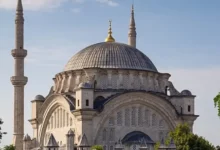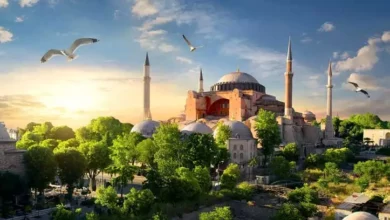Religion in Istanbul; Passage to spiritual world of city
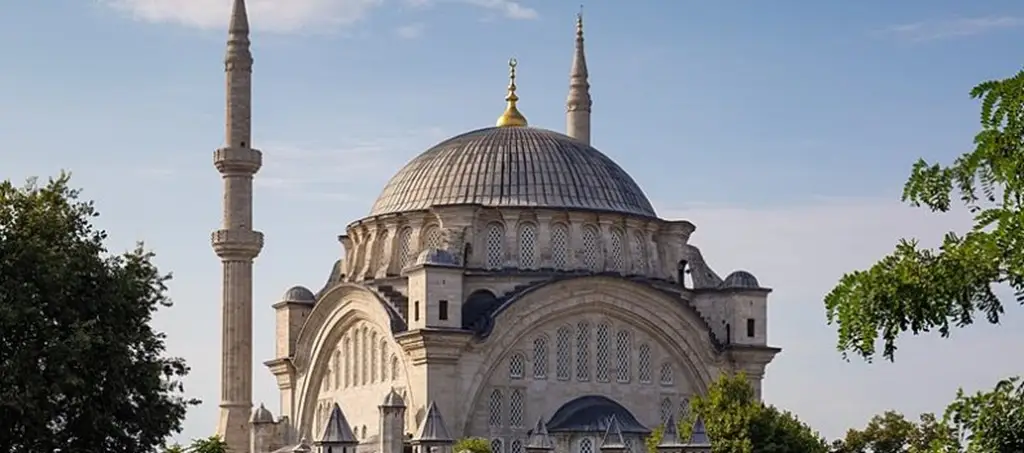
Traveling to historical and cultural cities is always an experience filled with wonders and discoveries. Each city, with its unique cultural and religious heritage, provides an opportunity for tourists to explore and become familiar with the local history, beliefs, and sights, including architecture, ceremonial rituals, and museums. Istanbul, a city that bridges the historical and religious roots of Europe and Asia, is a treasure trove of historical and religious artifacts. With its ancient history, Istanbul offers a unique blend of architectural, historical, and religious attractions. For many, traveling to Istanbul is an opportunity for a spiritual experience, which can be found in visiting a religious site. The city of Istanbul is home to numerous religious sites that can transport any observer to a transcendent realm for a moment. If you are interested in discovering the most important religious sites in Istanbul, this article will introduce you to them.
History of Istanbul
If we were to trace the history of Istanbul from the time it was conquered by Sultan Mehmed the Conqueror and its name changed from Constantinople to Islambol or Istanbul, we would go back 570 years. However, this city has a much longer history, dating back to the depths of human civilization. Throughout its history, Istanbul has been a center of trade, culture, and religion. As home to various religious groups, including Christians, Jews, and Muslims, the city has always witnessed the construction of magnificent religious structures, such as churches, synagogues, and mosques.
The history of Istanbul is a testament to its cultural and religious diversity. From its Greek and Roman roots to its Byzantine and Ottoman heritage, this city has played a central role in shaping world history. Today, Istanbul is a bustling metropolis that blends its rich history with modernity. It is a popular tourist destination, attracting millions of visitors annually who come to explore its historical and cultural treasures, including the Hagia Sophia, the Blue Mosque, and the Topkapi Palace. The city’s religious buildings, especially its mosques, are counted among its tourist gems and architectural and artistic achievements, to the extent that some of them, like the Hagia Sophia, serve as symbols of Istanbul in photographs and posters.
The Role of Religion in the Development of Civilization and Architecture in Istanbul
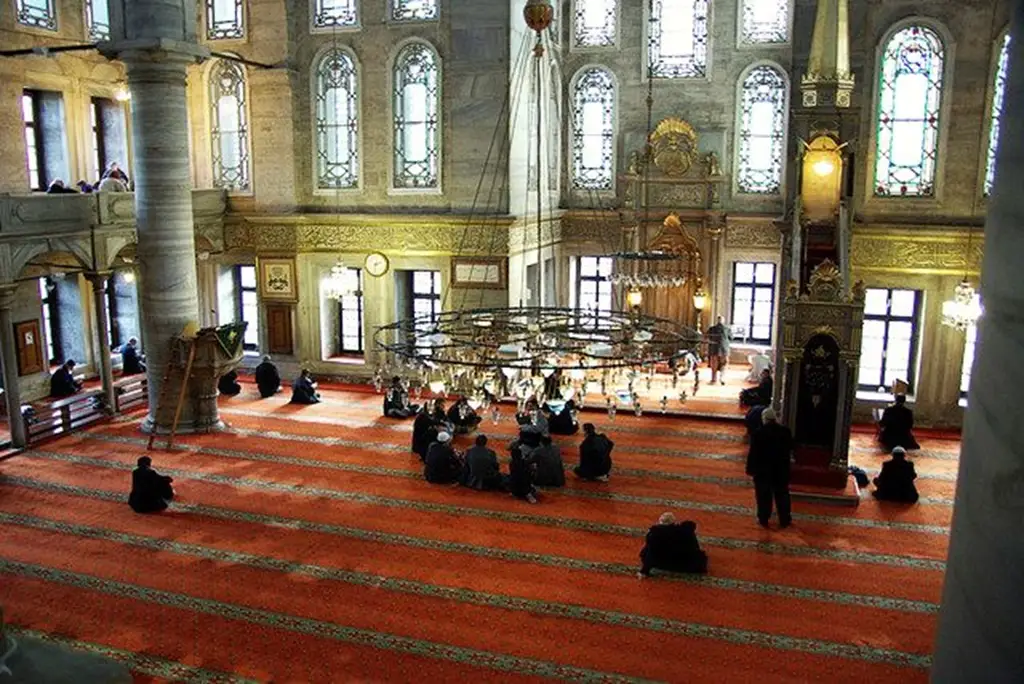
Istanbul was once considered the heart of the Islamic world. For centuries, it was the symbol of religious development and civilization for the most powerful empire in the world. As a result, religion has played a crucial role in the development of civilization and architecture in Istanbul. The city served as the capital of the caliphate for many years and boasts a magnificent Islamic heritage that is unparalleled among religious sites worldwide. Istanbul is home to many significant structures, including mosques, synagogues, temples, churches, and Sufi lodges, which are considered pilgrimage sites and attract millions of interested visitors annually. The city has a rich religious history that is beautifully reflected in its architecture.
The Flourishing of Religious Architecture in Istanbul
The conquest of Constantinople in 1453 by Sultan Mehmed II was a turning point that transformed Hagia Sophia from a mosque into a church, emphasizing the city’s new role as a symbol of Islamic art and culture. This transformation, along with the construction of the Blue Mosque and the Suleymaniye Mosque, showcased Istanbul’s central role in the evolution of Islamic architecture and its far-reaching influence beyond its borders, making the architectural style of this period one of the renowned styles, especially in mosque architecture in various regions. Istanbul, with its pervasive and influential religious history, stands as a distinct city among the world’s cities, where we can observe the influence of religion in every field of art, culture, and architecture. Islam, as the most influential religion that ultimately shaped the new identity of this city, has had profound effects on the civilization and culture of Istanbul. Especially in the ancient mosques and historical structures of Istanbul, the richness of its religious and cultural heritage is vividly evident.
The magnificent architecture of Istanbul is a unique fusion of religious and cultural influences. The religious structures of Istanbul embody a masterful synthesis of faith, artistic genius, and attention to tourism. The Blue Mosque, adorned with symbolic blue tiles and cascading domes, stands as a testament to the architectural skill of the Ottoman era. As visitors from around the world flock to witness its splendor and grandeur, this mosque has not only become a spiritual center but also a valuable tourist attraction. Tourists seeking a spiritual experience and exploration of the city’s ancient past are drawn to places that are now famous as symbols of religious structures. The numerous historical mosques, churches, and temples, alongside the whirling dervishes’ dances held in various city lodges, have doubled the connection to the city’s religious history. In the following, we will introduce the most important religious sites in Istanbul.
Hagia Sophia
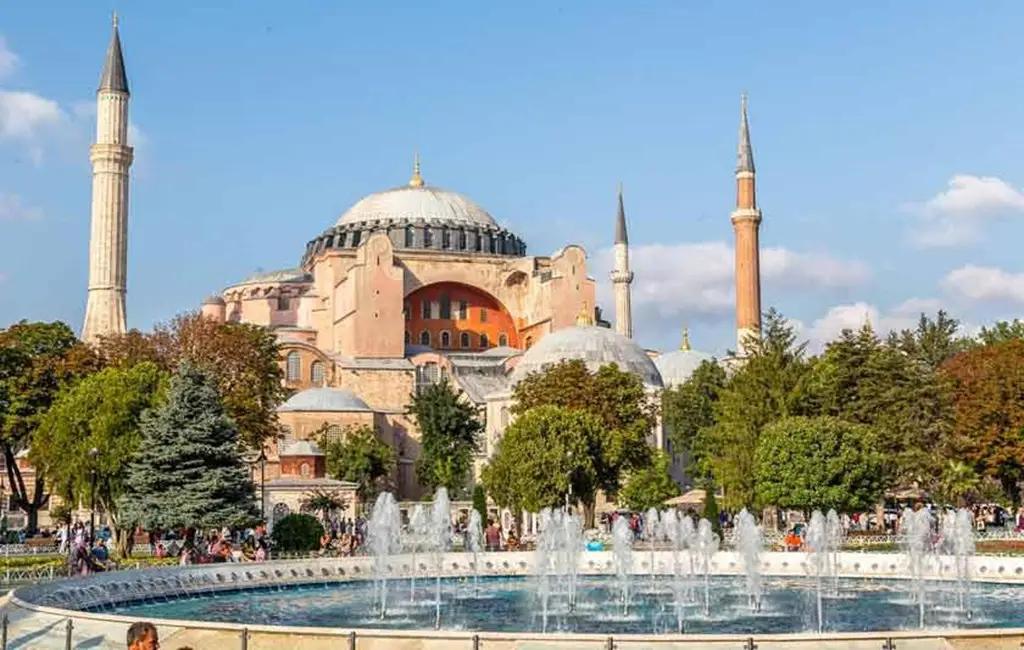
Hagia Sophia is considered the most famous religious site in Istanbul and is also regarded as the symbol of the city. Hagia Sophia is one of the most important tourist attractions in Istanbul and even in Turkey. Originally, Hagia Sophia was a grand cathedral built in the 6th century AD and served as the center of worship for Christians. However, later it was converted into a mosque and some elements of Muslim architecture were added to it. Hagia Sophia is a masterpiece of Byzantine architecture and throughout its history, it was known as the largest cathedral of its time. This structure has a large domed ceiling that is supported by massive columns, transferring the weight of the dome downwards.
The walls and ceiling of this mosque are covered with multicolored marble, green and white, or purple porphyry stones, and golden mosaics. Hagia Sophia is located in the Sultanahmet area, near the Topkapi Palace. This place had been converted into a museum for several years, but currently, Hagia Sophia is an active mosque and a place for Muslims to pray and worship.
Suleymaniye Mosque
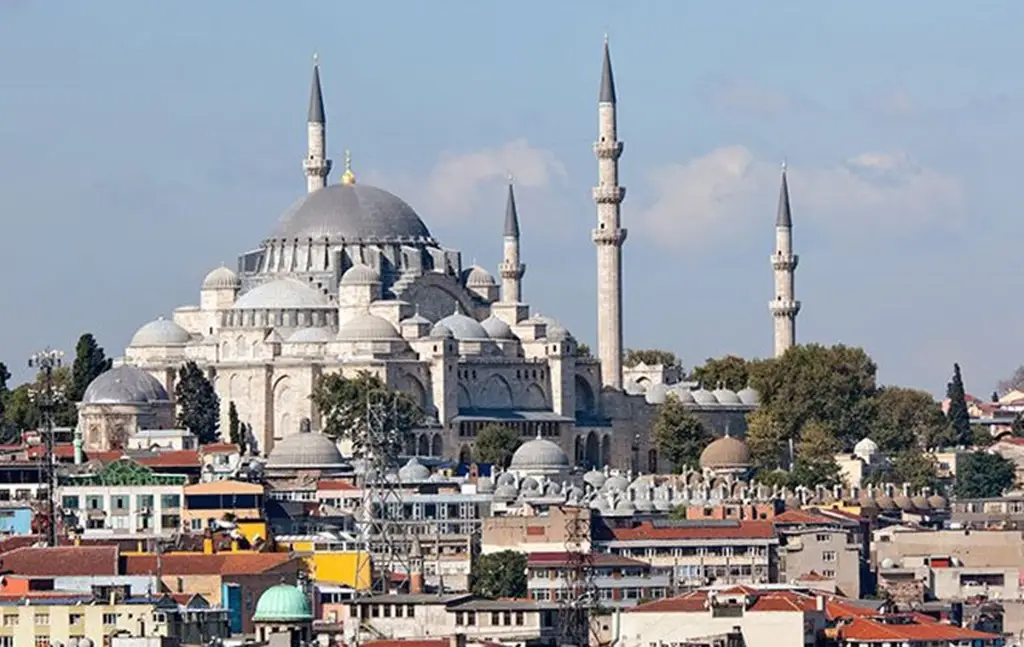
This mosque is one of the largest and most famous mosques in Istanbul. It was built by Sultan Suleiman, one of the most renowned Ottoman rulers, in the 16th century and is known for its striking architecture and beautiful interior. The foundation stone of the Suleymaniye Mosque in Istanbul was laid in 1550 AD by the famous Ottoman architect, Sinan, and its construction took seven years. In 1557 AD, this grand mosque was unveiled as the second-largest mosque in Istanbul after Hagia Sophia. The tallest dome of the mosque reaches a height of 53 meters with a diameter of 26.5 meters. Similar to other Ottoman mosques, smaller domes, mostly decorative, can be seen around the main dome. Suleymaniye Mosque also has four minarets, reaching a height of 76 meters.
Eyüp Sultan Mosque and Mausoleum
This mosque and mausoleum complex is located in the Eyüp district of Istanbul. This place is considered one of the holiest sites in Istanbul and attracts a large number of visitors every year. There are many reasons for the significance of this place as an important religious site in Istanbul. The mosque is named after Abu Ayyub al-Ansari, a companion of Prophet Muhammad (peace be upon him), who passed away during the Arab siege of Constantinople in the 7th century. The mosque was built during the Ottoman era and has undergone several renovations and expansions over the years.
It is situated in the Eyüp district of Istanbul, which is named after Eyüp Sultan. The mausoleum of Eyüp Sultan is located next to the mosque and is considered a sacred place by Muslims. It is believed to be the final resting place of Eyüp Sultan, who was a close companion of Prophet Muhammad and a respected figure in Islamic history. The mausoleum has a rich historical significance and has been reconstructed and restored multiple times over the centuries. Overall, this mosque and mausoleum complex is considered a sacred place and a popular destination for pilgrims and tourists in the city of Istanbul.
Blue Mosque or Sultan Ahmed Mosque
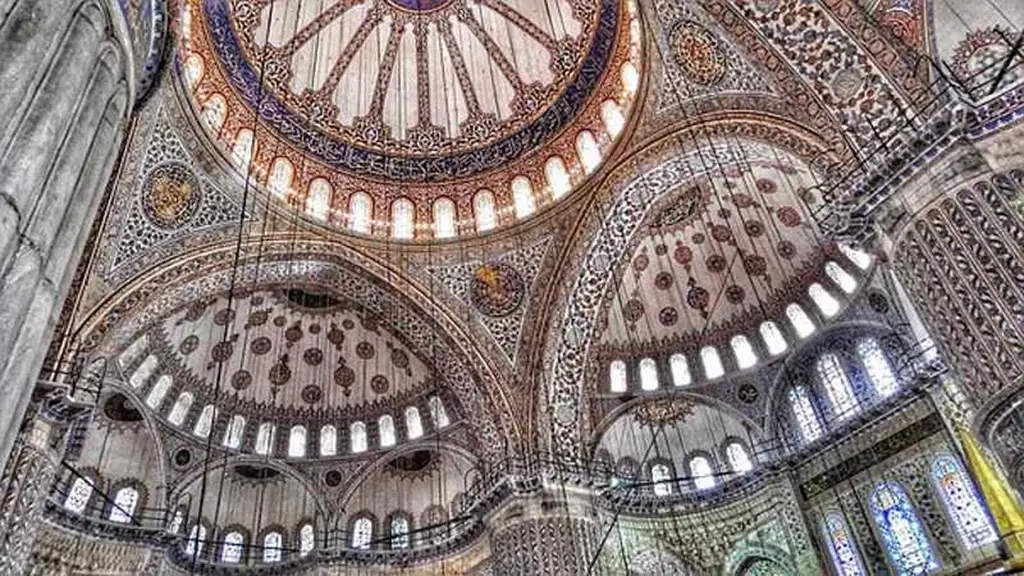
The Sultan Ahmed Mosque, also known as the Blue Mosque, is one of the most important tourist attractions in Istanbul and even in Turkey. This mosque is located in the Sultan Ahmed area, near the Topkapı Palace. The Sultan Ahmed Mosque is recognized as one of the most beautiful and famous landmarks in the city of Istanbul. It was built during the Ottoman period in 1609 AD by the order of Sultan Ahmed I, one of the Ottoman sultans. The Sultan Ahmed Mosque is known for its beautiful design and unique architecture, making it a masterpiece of Ottoman architecture. The Blue Mosque or Sultan Ahmed Mosque has six minarets and reaches a height of 43 meters. Inside the mosque, its ceiling is covered with 20,000 blue-colored tiles, which is why it is also famous as the Blue Mosque. Additionally, inside the mosque, you can admire masterpieces of mosaic art depicting flowers and plants. Alongside visiting the Sultan Ahmed Mosque, you can enjoy the beauty of its architecture and explore the history and culture of this structure. Furthermore, you can also delight in visiting other historical and cultural attractions near the Sultan Ahmed Mosque, such as the Topkapı Palace.
Zeytinburnu Mosque
Zeytinburnu Mosque is one of the important mosques in Istanbul, known for its beautiful brickwork. It is located in the Zeytinburnu district. This mosque was built in 1782 AD by the famous architect “Mehmet Tahir Ağa.” The architecture of this mosque follows the Ottoman style, and the main material used in its construction is brick, which gives a distinctive facade to the building. There is a beautiful fountain in the courtyard of this mosque, adding to its charm and creating a pleasant atmosphere. Additionally, the mosque has two minarets with a height of 26 meters.
Rustem Pasha Mosque
Rustem Pasha Mosque is one of the historical and well-known mosques in Istanbul. It was built in 1561 by the order of Rustem Pasha, the Grand Vizier, and designed by the architect Sinan. The mosque is located in the Eminönü area, along the southern coast of the Golden Horn in Istanbul. The architecture of this mosque represents an example of Ottoman architecture and possesses a unique design and beauty. One of its notable features is the beautiful tilework and remarkable architecture.
Fatih Mosque
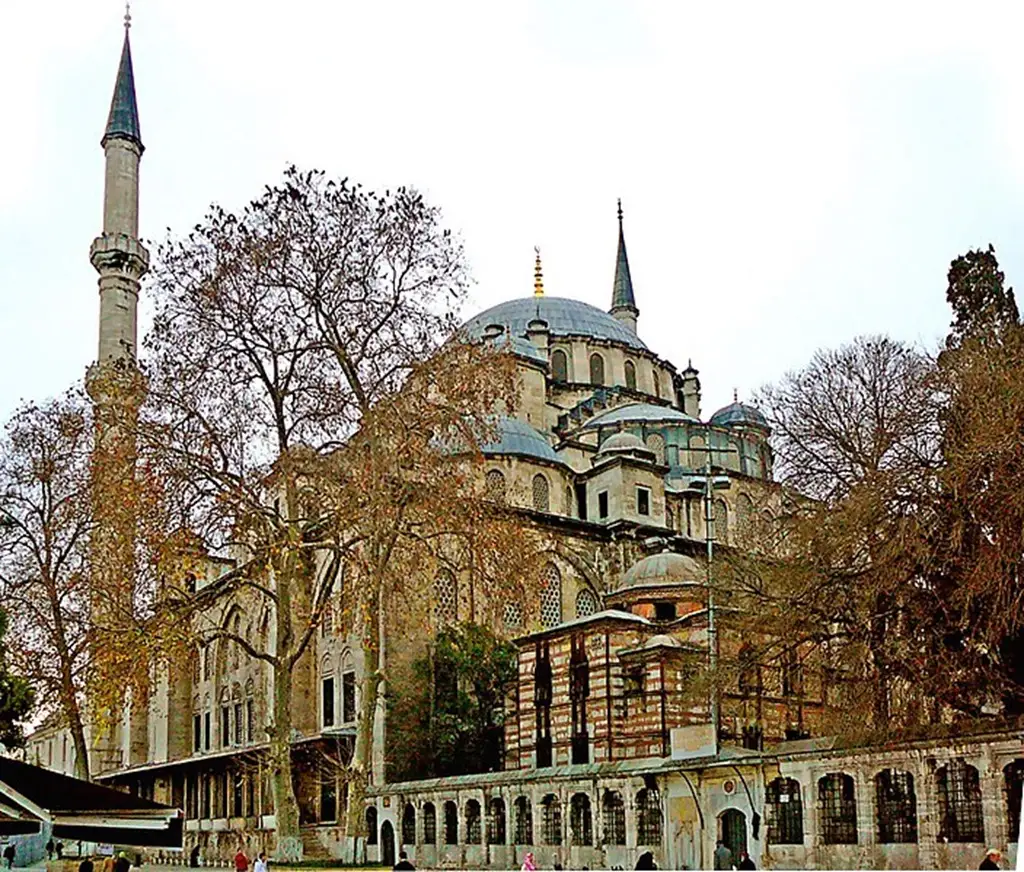
Fatih Mosque is one of the important and historical mosques in Istanbul. This mosque was built in 1453 by the order of Sultan Mehmed the Conqueror, the conqueror of Constantinople. Fatih Mosque is located in the Fatih district, near the large Eminönü Square. It is recognized as a historical and cultural symbol of Istanbul and is an important attraction for tourists. The architecture of the Fatih Mosque follows the Ottoman style and possesses a unique design and beauty. The exterior facade of the mosque is made of beautiful white marble, and there are lovely minarets on both sides of the mosque. The interior of the mosque is adorned with beautiful mosaics and artistic designs. Fatih Mosque holds great historical and religious significance. It is considered a center for worship and religious activities for the Muslim community in Istanbul and Turkey.
Galata Mevlevi Museum
The Galata Mevlevi Museum, which is a type of Sufi lodge, is the most famous place to witness the whirling dervishes’ dance, known as “Sema.” Watching the spinning dervishes is one of the significant religious experiences that you can witness in Istanbul. This museum is located near the Galata district and on certain days, the public is allowed to attend the Sema ceremony held there.


